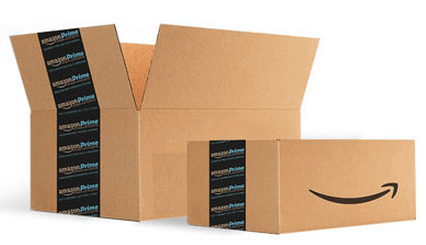If you are one of the many Amazon Vendors who did not receive your Purchase Orders from Amazon on Monday, you probably have a lot of questions (still unanswered) as we head into the tail end of this week including:
- What’s going on?
- What should I do about it?
- Is it time to transition to Seller Central and how do I do that?
If there’s one thing we know – its that uncertainty is unsettling. This week, Vendors across a variety of brands and verticals are wondering:
- What’s happening with my Amazon business?
- Will Amazon ever buy from me again?
- I’ve never operated a Seller account before, what should I do?
Rest assured, this is not a time to panic or make rash decisions without having an understanding of what is happening and what the implications are for the changes taking place within Vendor Central.
We spoke with our team of experts to gather insight but before we dive in, let’s review what happened earlier this week.
Amazon Vendor Central Stops Issuing Purchase Orders
On Monday, brands operating via Vendor Central received a variety of messages indicating Amazon is moving their products from Vendor Central to Seller Central, stopping all purchase orders, or citing “technical issues” within the ordering system.
Below is a list of messages sent out by Amazon’s team:
I would like to inform you that our internal team have reviewed your business with Amazon and strongly believes that Amazon customers would be better served if your products were made available through Seller Central. As we are constantly looking for ways to improve the customer experience we recommend you to setup Seller account to continue your business with Amazon.
Additional reports indicated “technical issues with the ordering system” and messages suggesting that suppliers should not expect future purchase orders to be placed at all:
Please be informed that at this time, we are not placing any purchase orders on your products. To preserve the customer experience, the featured offer will be disabled when the product is out of stock. We will notify you if we choose to place any purchase orders.
For brands who operate their business via Vendor Central (with or without a Vendor Central Manager) the update was perplexing, to say the least.
What’s going on & what should I do about it?
Although we can’t say with complete certainty why Amazon is no longer issuing Purchase Orders, it’s vital brands take a moment to consider the long-term vision for their business on the Marketplace.
It’s likely Amazon is using metrics such as profitability and sales velocity to determine whether a brand should be selling as a vendor, seller, or both (via the hybrid model).
“While I understand the frustration from brands who sell on Amazon at the abruptness of these changes, it’s important not to react emotionally. In most cases, what’s best for your business is understanding whether Amazon wants you to be a Seller or a Vendor and plan accordingly.”
– Rick Backus, CEO at CPC Strategy
“All these signals indicate Amazon wanting their Retail (1P) Team to only be working with the very head ASINs in each category. In parallel, the Marketplace platform, tools, and ecosystem has matured to the place where Amazon is confident they can fill consumer selection and empower self-service advertising through that platform.”
– Pat Petriello, Head of Marketplace at CPC Strategy

How Do Amazon Vendors Transition to Seller Central?
In the event Amazon has completely stopped issuing POs and is now encouraging your brand to shift to Seller Central, here’s what you should know:
1. Adopting Seller Central is not hard, but if you haven’t done it before, the process is bound to create an element of fear.
As experts in the Amazon space, we completely understand this concern. The good news is Amazon has a plan for your brand and they are already taking steps to shut down Seller listings & accounts for brands they don’t want to be sellers. Now, they’re taking the same step in the opposite direction for brands they don’t want to be Vendors.
2. Amazon is setting the stage for the launch of “One Vendor”
Amazon is preparing for the combined Vendor / Seller portal (now being referred to as One Vendor). This portal will dictate how Amazon wants you to sell on the platform. They’re putting brands in the appropriate buckets now to ease the launch of that program.
3. Seller Central was designed from the start to be self-service, so everything Amazon has developed is meant to ease the adoption process.
Vendor Central originally developed to do the bare minimum that needs to be done for you to sell the product to Amazon and walk away. But Amazon Seller Central is built on self-service & automation; the quicker brands can adapt the less painful the process is going to be in the long term.
Pro-tip: Although Prime Day is 4 months away, Vendors should start the process of shifting to Seller Central now to ensure everything in your account is running smoothly by Q3.
Benefits of Seller Central vs Vendor Central:

Vendor Central and Seller Central come with their own set of pros and cons, so the right one for your business depends on your resources as a merchant, and the level of control you want.
Benefits of selling via Seller Central include:
- Better price control, inventory selection, and ability to update content
- Impression & conversion rate reporting (based on customized & lifetime business data at ASIN & business level)
- Control over the quantity & timing of inventory availability & pricing on Amazon for new product launches
- Promotions don’t have to be subsidized and can go live instantly
- Reporting is user-friendly and updates hourly
To learn more, check out our recent article, “Amazon Seller Central vs. Vendor Central [2019]“
A Successful Seller Central Launch Strategy
CPC Strategy makes decades of Amazon selling expertise available to brands in order to best support the launch of your Amazon Seller Central account.
Coverage includes but is not limited to what’s below:
- Seller Central Walkthrough and UI Training
- Inventory Hydration and Feed File setup/submission
- FBA Training – how you should ship, label and evaluate the profitability of fulfilling through Amazon
- ASIN Matching and Catalog Setup – parent/child relationships, merging etc.
- Best in Class 3rd Party Tool Suite – what platforms/tools are must-haves for 3P sellers and what metrics should you pay attention
- Content and Page optimization best practices
- Deploying customer services the right way and relaying account health best practices
- Competitive Analysis and Research Best Practices
1) Seller Central Account Setup

CPC Strategy will guide you through the registration process. Amazon requires a lot of documentation to start an account. Amazon requires documentation on the business, manufacturing/sourcing information, HAZMAT, and more to ensure you have products that are allowed to be sold on the marketplace.
Product Listings: CPC Strategy will work closely with your team to ensure we have all the necessary information and regulatory identifiers to list your products. Amazon has an abundance of legacy listings which may already have ownership of Product Titles, UPCs, and other product information. The Consulting team will help get your products uploaded to Amazon correctly.

Brand Registry: For any brand that is serious about protecting its messaging, image, and developing brand equity on the channel, Brand Registry is the key to being successful. CPC Strategy will aid in having the correct Trademark information for Brand Registry and will allow for full control of product listings. Once Brand Registered, you will be able to add Enhanced Brand Content on pages, build Storefronts, and have tools to remove unauthorized sellers.

2. FBA Training & Setup
Key to any high-performing seller is a well-informed, efficient fulfillment process to avoid fees and delays in inventory availability.

Available upon request, we can provide in-depth training for you and your team on the pick, pack, and ship process as well as how to navigate Seller Central as it relates to inventory management. Our report informs how much inventory you should be sending into Amazon FC’s to maintain rank and avoid stockouts.
3. Promotional & Merchandising Strategy
We provide the strategy to determine when it makes sense to take advantage of specific deal formats. Based off of factors like seasonality, sales velocity, product type, and marketing budget, we advise on the right promotion at the right time.

4. New Product Launches
As you build out your product line, it’s critical to give each new listing the best possible chance to succeed on the Amazon Marketplace. The goal of our product launch strategy is to rapidly impact sales velocity in order to strengthen the connection between your ASINs and their most valuable search terms.
Using advanced URL tracking, advertising, promotional, and discounting strategies, we can effectively influence a newly-launched product’s sales momentum to drive high organic positions early on.
5. Advertising Strategy & Management

CAPx: CPC’s Proprietary Amazon Ad Tech: We developed our own programmatic ad management platform specifically designed for Amazon’s primary advertising products, Sponsored Products, and Amazon Marketing Services. This allows us to drive ad performance for unique business objectives, harvest and optimize for search terms efficiently, and effectively analyze performance trends over time.
Sponsored Products Execution: With the right campaign structure, testing framework, and bid management processes in place, Sponsored Products has proven to be an impactful lever in manufacturing “keyword– ASIN” relationships.
Product Rank Tracking Approach: To most accurately track product rank trends, we developed proprietary rank tracking software specifically for Amazon listings. We deliver on monitoring and analyzing product rank for your top-performing ASINs against specific, key terms and the activities that drive performance swings
For more on how CPC Strategy can assist your brand with the transition to Seller Central, email [email protected]
You Might Be Interested In














